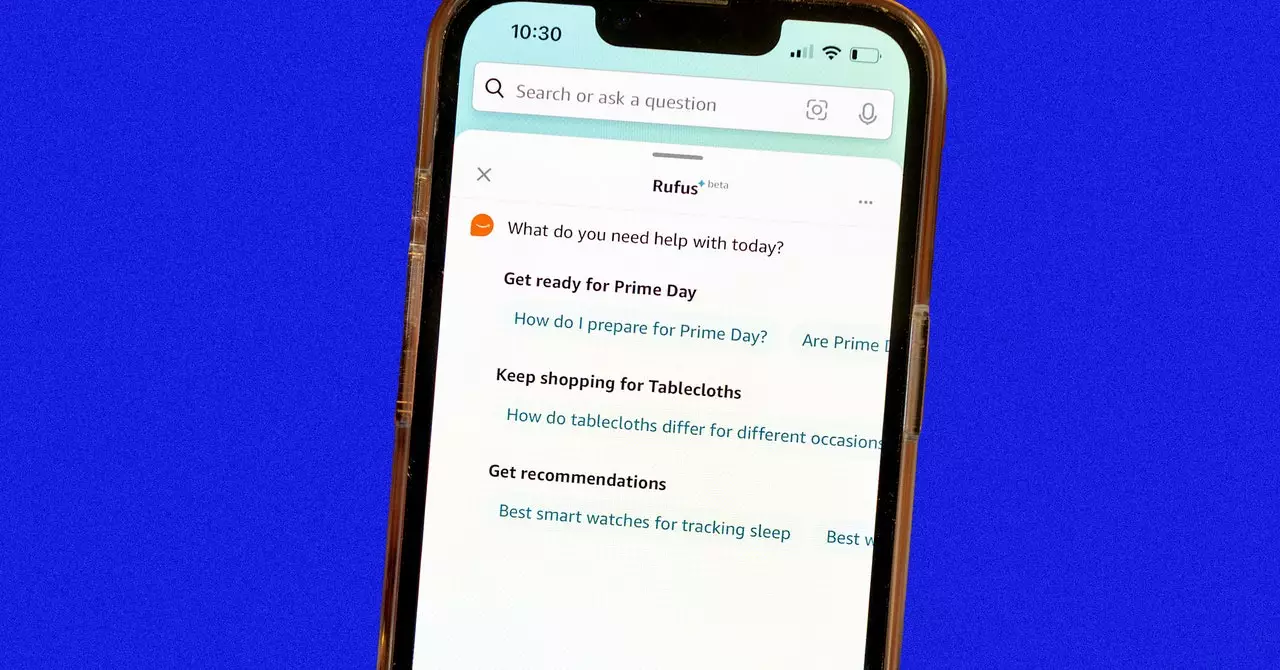Amazon has transformed the retail landscape with its innovative technologies, and the introduction of Rufus, its chatbot designed to enhance user experience, is another step in that direction. With the potential to provide users with better access to historical pricing data, Rufus could serve as a significant tool for shoppers looking to make informed purchasing decisions. Trishul Chilimbi, an Amazon vice president, has announced that Rufus has undergone extensive training using product data, customer reviews, and Q&A submissions both from Amazon’s own ecosystem and external sources. This strategical move aims to simplify the process of research for consumers, presenting a straightforward interface for retrieving complex data.
One of the primary advantages that Rufus could offer is historical price tracking—a feature many consumers find invaluable when approaching their purchasing decisions. Tools like CamelCamelCamel and Glass It have historically filled this niche, yet they faced limitations when WIRED tested these options and found gaps in their historical data, particularly around the LifeStraw filter. Alternatively, Keepa provided more comprehensive data dating back to 2017, highlighting a significant price drop in 2022. This indicates that while existing tools have their strengths, there is room for a more integrated solution in the form of Rufus.
Echoing this sentiment, Amor Avhad, founder of Glass It, noted that Amazon’s push toward transparency in price history is beneficial for consumers. By equipping shoppers with clear insights into pricing trends, Amazon can enhance user trust, and empower informed purchasing while supporting the notion that price transparency is a consumer right.
Amazon’s Transparency Challenges
Despite its strides in consumer transparency, Amazon has not been devoid of critics. The Federal Trade Commission has raised concerns about the company’s practices, accusing it of being deceptive and anticompetitive regarding subscription renewals and sales algorithms. Interestingly, Amazon has maintained some transparency in its pricing model. For instance, if a user leaves an item in their cart, they are informed about any price fluctuations, enhancing user awareness. This proactive approach is essential when considering the landscape of digital shopping, where competition is fierce and customer loyalty is often fleeting.
Yet, questions arise regarding how price history will influence merchants on Amazon’s platform. Some sellers, like Tristan Månsson-Perrone from Radius Outfitters, express skepticism, noting that their pricing structures seldom change. This implies that for certain products, Rufus may not present valuable insights that could drive consumer behavior. As such, while there are potential benefits, the implications for sellers might be complex and evolve differently based on goods offered.
The Nature of Rufus as a Shopping Companion
Rufus, charmingly named after a corgi that was part of Amazon’s history, is designed more than just as a commercial aspect of shopping; its intent rests on being a trusted purchasing companion. With functionalities that summarize reviews to present balanced perspectives, Rufus promises a user-friendly experience that differentiates itself from typical sales-driven customer service interactions. However, as with any AI-driven tool, it has its limitations. WIRED noted Rufus’s shortcomings when addressing ethical shopping queries, revealing a gap in its capabilities that might hinder users looking for values-driven purchasing options.
The potential impact of tools like Rufus on traditional review sites is also worth examining. As more consumers rely on AI for their purchasing decisions, the relevance and revenue of professional reviews could be challenged, raising concerns about the sustainability of these platforms.
To sum up, while Rufus may initially seem like just another tool in Amazon’s arsenal, its capacity for exclusive pricing data could transform it into an essential resource for shoppers. By bridging the gap between historical price data and user-friendly technology, it stands poised to change how consumers interact with online retailing. Nevertheless, both sellers and consumers must navigate this evolving landscape carefully. The promise of a shopper’s best friend hinges not only on its pricing capabilities but also on its ability to adapt to the nuanced needs of both buyers and sellers in an ever-changing marketplace. As Rufus continues to develop, watching its trajectory will undoubtedly be compelling for consumers and businesses alike.

